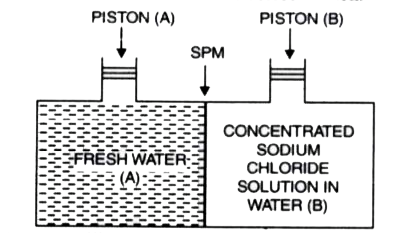Identify the correct statement(s) in relation to RE's
RE's show extreme specificity towards the base sequence in DNA strands
Each RE's recognises specific base sequence in DNA strands
No two different RE's will act on DNA at the same specific base sequence site
All
The correct Answer is:D
To identify the correct statement(s) in relation to restriction endonucleases (REs), let's analyze the statements provided:
1. Understanding Restriction Endonucleases (REs):
- Restriction endonucleases are enzymes that cut DNA at specific sequences. They are crucial in molecular biology for cloning and genetic engineering.
2. Evaluating the First Statement:
- The first statement claims that "the restriction endonuclease RE shows extreme specificity towards the base sequence in DNA."
- This statement is incorrect. While REs do recognize specific sequences, they do not exhibit "extreme specificity." They have a defined recognition sequence where they cut, but they can act on similar sequences.
3. Evaluating the Second Statement:
- The second statement asserts that "each restriction endonuclease recognizes a specific base sequence in the DNA strand."
- This statement is correct. Each RE has a unique recognition sequence that it identifies and binds to before making a cut.
4. Evaluating the Third Statement:
- The third statement states that "no two different restriction enzymes will act on the DNA of the same specific base sequence site."
- This statement is incorrect. It is possible for different restriction enzymes to recognize and act on the same DNA sequence. Therefore, this statement is not true.
5. Evaluating the Fourth Statement:
- The fourth statement claims "all of the above."
- Since not all previous statements are correct, this statement is also incorrect.
Conclusion:
Based on the evaluations, the only correct statement is the second one: "each restriction endonuclease recognizes a specific base sequence in the DNA strand."
Final Answer:
- The correct statement is: "Each restriction endonuclease recognizes a specific base sequence in the DNA strand."
---
- Restriction endonucleases are enzymes that cut DNA at specific sequences. They are crucial in molecular biology for cloning and genetic engineering.
- The first statement claims that "the restriction endonuclease RE shows extreme specificity towards the base sequence in DNA."
- This statement is incorrect. While REs do recognize specific sequences, they do not exhibit "extreme specificity." They have a defined recognition sequence where they cut, but they can act on similar sequences.
- The second statement asserts that "each restriction endonuclease recognizes a specific base sequence in the DNA strand."
- This statement is correct. Each RE has a unique recognition sequence that it identifies and binds to before making a cut.
- The third statement states that "no two different restriction enzymes will act on the DNA of the same specific base sequence site."
- This statement is incorrect. It is possible for different restriction enzymes to recognize and act on the same DNA sequence. Therefore, this statement is not true.
- The fourth statement claims "all of the above."
- Since not all previous statements are correct, this statement is also incorrect.
Based on the evaluations, the only correct statement is the second one: "each restriction endonuclease recognizes a specific base sequence in the DNA strand."
- The correct statement is: "Each restriction endonuclease recognizes a specific base sequence in the DNA strand."
Topper's Solved these Questions
- PRINCIPLES AND PROCESSES BOOK - AAKASH SERIESCHAPTER - PRINCIPLES AND PROCESSES EXERCISE - Exercise - III (Previous AIPMT/NEET Questions)
26 Videos
- PRINCIPLES AND PROCESSES BOOK - AAKASH SERIESCHAPTER - PRINCIPLES AND PROCESSES EXERCISE - Exercise-I (More than one options correct)
23 Videos
- PLANT GROWTH AND DEVELOPMENT BOOK - AAKASH SERIESCHAPTER - PLANT GROWTH AND DEVELOPMENT EXERCISE - EXERCISE -III (PREVIOUS AIPMT/NEET QUESTIONS)
27 Videos
- PRINCIPLES OF INHERITANCE AND VARIATIONBOOK - AAKASH SERIESCHAPTER - PRINCIPLES OF INHERITANCE AND VARIATIONEXERCISE - EXERCISE -III (Previous AIPMT /NEET Questions)
37 Videos
Similar Questions
Identify th correct statement(s):
View SolutionConsider the Fig. and make the correct option.

View SolutionIdentify the correct statements
View SolutionIdentify the correct statements
View SolutionIdentify the correct statements:
View SolutionIdentify the correct statements:
View SolutionIdentify the correct statements:
View Solutionidentify the correct statements:
View SolutionIdentify the correct statement(s) in relation to the following reaction.
Zn+2HCl→ZnCl2+H2
View SolutionIdentify the correct statements (s):
View Solution
